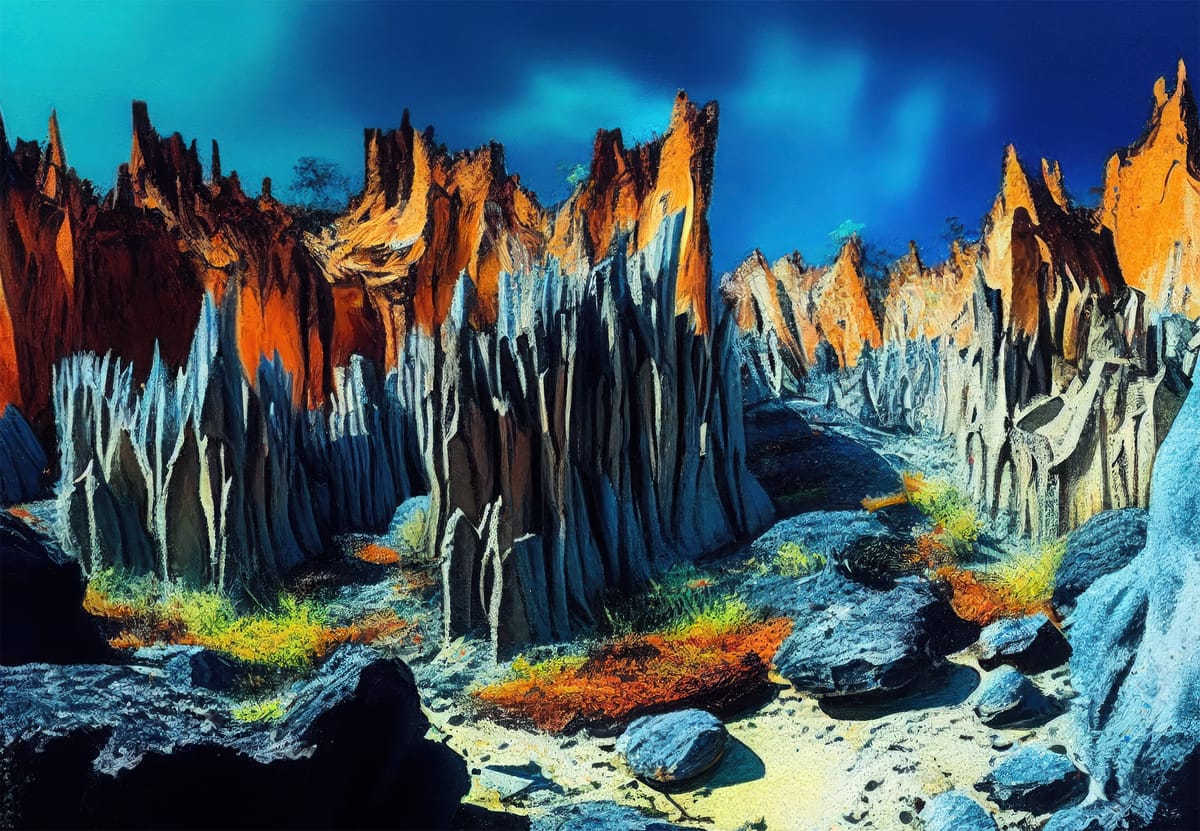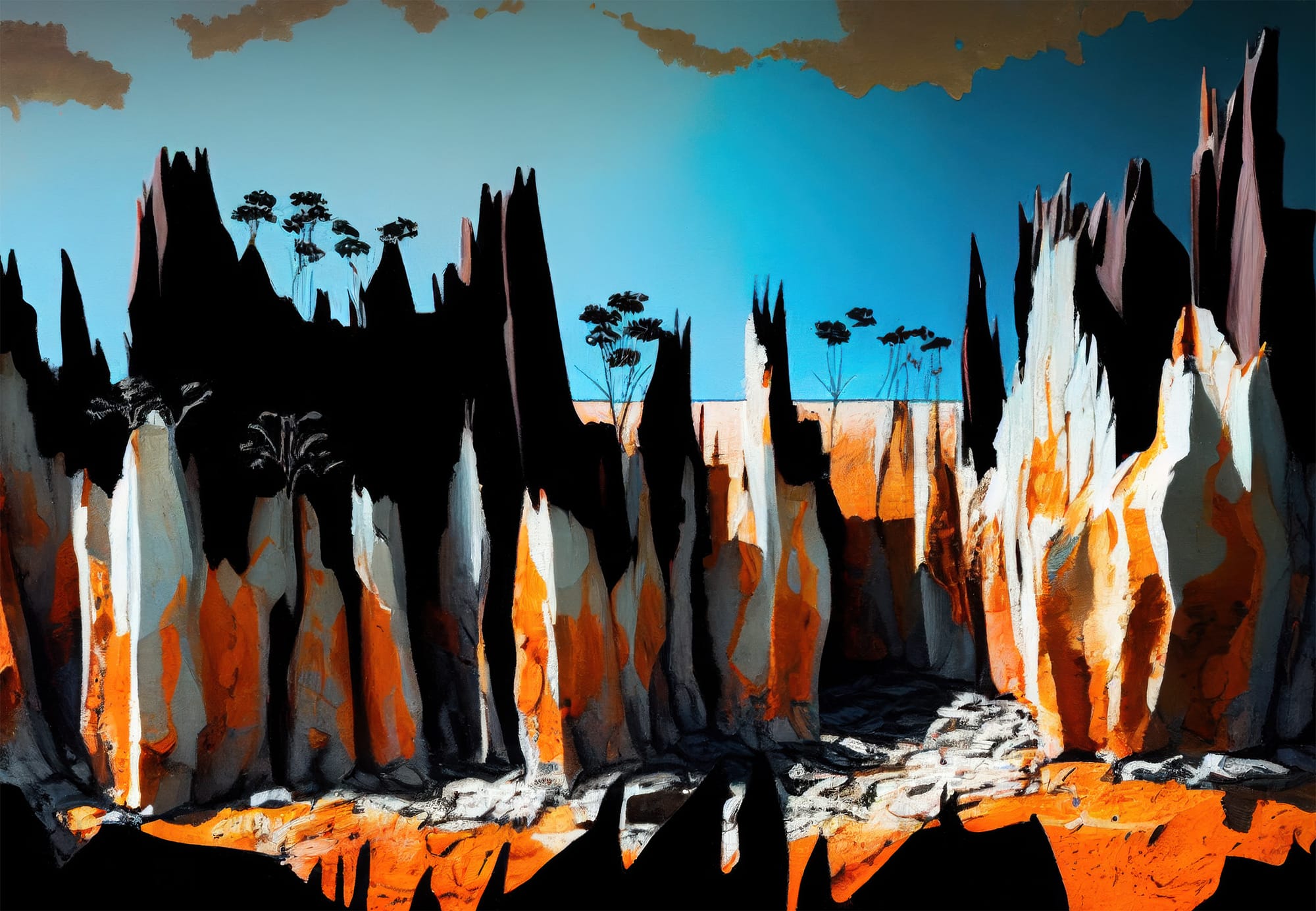Madagascar's Tsingy: The Stone Forest
Discover Madagascar's Tsingy de Bemaraha, a UNESCO World Heritage site featuring razor-sharp limestone pinnacles. Explore this unique "stone forest," home to diverse wildlife and stunning landscapes. Navigate challenging terrain, cruise the Manambolo River, and embrace local culture.

Madagascar, the fourth-largest island in the world, is home to some of the most unique and breathtaking landscapes on Earth. Among its many wonders, the Tsingy de Bemaraha National Park stands out as a true marvel of nature. In this blog post, we'll dive into the fascinating world of Madagascar's Tsingy, covering must-see attractions, travel tips, and local insights to help you plan an unforgettable adventure!
What is Tsingy?
"Tsingy" is a Malagasy word meaning "where one cannot walk barefoot," and it's easy to see why. The Tsingy de Bemaraha is a vast limestone formation, often referred to as a "stone forest," consisting of razor-sharp karst pinnacles that can reach up to 70 meters (230 feet) in height. This UNESCO World Heritage site is not just a geological wonder but also home to a diverse array of flora and fauna, many of which are endemic to Madagascar.
Must-See Attractions
1. The Great Tsingy
The crown jewel of the park, the Great Tsingy, is a maze of limestone needles that will leave you in awe. Navigate through narrow canyons and across rope bridges for breathtaking views of this otherworldly landscape.
2. The Little Tsingy
While smaller in scale, the Little Tsingy offers equally stunning vistas and is slightly more accessible for those who might find the Great Tsingy too challenging.
3. Manambolo River Gorge
Take a canoe trip through the Manambolo River Gorge to see the Tsingy from a different perspective. You'll also have the chance to spot wildlife and visit ancient Vazimba tombs hidden in caves along the riverbank.
4. Andamozavaky Cave
This impressive cave system features stunning stalactites and stalagmites. It's also a sacred site for the local Vazimba people, adding cultural significance to its natural beauty.
5. Baobab Alley
While not part of the Tsingy itself, the nearby Baobab Alley is a must-visit. These ancient, massive trees are iconic symbols of Madagascar and offer fantastic photo opportunities, especially at sunset.
Travel Tips
- Best Time to Visit: The dry season (April to November) is ideal for exploring the Tsingy. The park is often closed during the rainy season due to impassable roads.
- Getting There: The park is remote, located about 400 km west of Antananarivo. Most visitors fly to Morondava and then take a 4x4 vehicle to the park (about 8-10 hours drive).
- Accommodations: Options range from basic campsites to eco-lodges. Book in advance, especially during peak season.
- Guided Tours: Due to the challenging terrain and to protect the fragile ecosystem, visitors must hire local guides to explore the Tsingy.
- Physical Preparation: Some routes through the Tsingy involve climbing and squeezing through narrow passages. Be prepared for a physical challenge!
- Pack Smart: Bring sturdy hiking shoes, sun protection, and plenty of water. A headlamp can be useful for exploring caves.
- Respect the Environment: The Tsingy ecosystem is fragile. Stay on designated paths and follow your guide's instructions to minimize impact.

Local Insights
- Learn Some Malagasy: A few basic phrases in the local language can go a long way in connecting with locals. Try "Manao ahoana" (hello) and "Misaotra" (thank you).
- Try Local Cuisine: Don't miss out on traditional Malagasy dishes like romazava (a meat and greens stew) or koba (a sweet made from ground peanuts, rice, and banana).
- Support Local Communities: Consider purchasing handmade crafts from local artisans. The intricate woodcarvings are particularly beautiful and make great souvenirs.
- Respect Fady: Many places in Madagascar have "fady" or taboos. Your guide can inform you about any local customs to observe.
- Slow Down: Embrace "mora mora" – the Malagasy philosophy of taking things slowly. It's not just a saying, but a way of life that can help you truly appreciate the beauty of the Tsingy and Madagascar as a whole.
Wildlife Watching
The Tsingy is not just about rock formations; it's a biodiversity hotspot. Keep an eye out for:
- Lemurs: Several species inhabit the park, including the Decken's sifaka and the red-fronted brown lemur.
- Birds: Over 100 species of birds call the park home, including the Madagascar fish eagle.
- Reptiles: The park is a haven for reptiles, including the impressive Oustalet's chameleon.
Conclusion
Exploring Madagascar's Tsingy is an adventure like no other. From the awe-inspiring stone forests to the unique wildlife and warm local culture, a trip to the Tsingy de Bemaraha National Park promises memories that will last a lifetime. Remember to tread lightly, respect the environment and local customs, and prepare for an experience that will challenge and amaze you in equal measure. Madagascar's Tsingy truly is a wonder of the natural world, waiting to be discovered by intrepid travelers. So pack your bags, bring your sense of adventure, and get ready to explore one of the most unique landscapes on Earth!